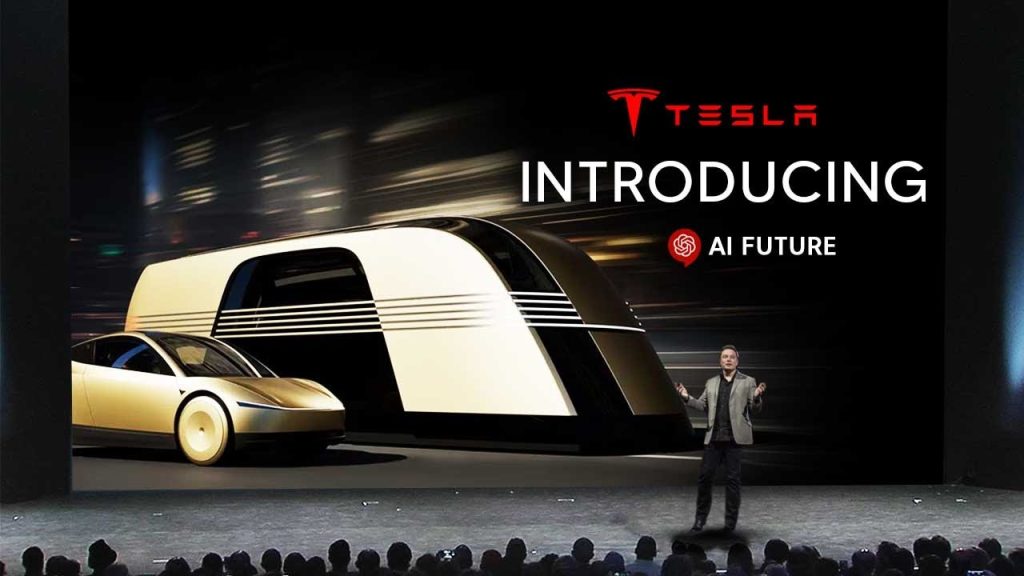Tesla’s Vision for Future Transport Autonomous Vehicles and Robots

Elon Musk recently lifted the curtain on Tesla’s latest AI innovations. The event was a deep dive into futuristic transport and robotics.
Tesla’s autonomous vehicle technology, complemented by humanoid robots, paints an intriguing picture of what lies ahead.
The Future of Transportation
Elon Musk’s recent Tesla robot event showcased cutting-edge AI and autonomous vehicle technology. It was a spectacle that offered a glimpse into a new era of transport. The core criticism? Current transportation is costly, dangerous, and unsustainable due to emissions. Musk highlights how autonomous vehicles can revolutionize these aspects.
Tesla’s self-driving cars aim to move from supervised to unsupervised autonomy. This means we might soon sleep during commutes, waking up at our destination. The idea is that these cars could be ten times safer than humans. They could also free up more time, allowing people to relax or work while commuting.
Tesla’s Cyber Cab: A Game Changer?
One intriguing development is the Cyber Cab, an affordable autonomous vehicle aimed at the masses. The estimated operating cost is around 20 cents per mile, significantly lower than current transit options. This shift could mark the beginning of individualized mass transit.
The Cyber Cab’s design is futuristic, lacking traditional controls like steering wheels or pedals. It’s set to retail below $30,000, revolutionary in the autonomous market. Expect its production to start before 2027, with potential mass availability by 2030. It even features wireless induction charging, removing the need for plug-ins.
Tesla’s Self-Driving Fleet Vision
Tesla envisions a fleet resembling Uber’s model but autonomous. Owners can contribute vehicles to Tesla’s fleet, earning income when not in use. This dual-ownership model mixes personal and company-owned vehicles, enhancing flexibility.
Equipped with AI, these cars rely solely on cameras for navigation. With prices below $30,000, the Cyber Cab aims to revolutionize public transport. It’s a vision that seems straight from a sci-fi movie. It’s fascinating to see if people will adapt to this new mode of travel.
The Power of Data in Self-Driving
Tesla’s autonomous system boasts a million lifetimes of driving experience. Every Tesla car contributes to this data pool, making AI a more effective driver than humans. This constant data collection is key to refining and enhancing Tesla’s self-driving capabilities.
Unlike humans, Tesla’s AI can see in all directions and doesn’t tire. It promises safer roads and more efficient use of time. The AI’s vision-based approach negates expensive equipment, keeping car production costs low, possibly making full autonomy more accessible.
A Glimpse at the Future with Robo Van
Tesla’s Robo Van takes autonomous transportation a step further. It could carry 20 people, programmed to operate without a driver. It’s designed for commercial use, like transporting teams or goods across a city. This adds a new dimension to mass transit solutions.
As mass transit evolves, autonomous vehicles may replace traditional buses and cargo vans. It’s an innovative approach to reduce urban congestion, boasting potential operational costs as low as 5 cents per mile. Tesla is visionary in transforming the look of future roads.
Exploring Tesla’s Humanoid Robot
The Tesla bot, modeled like a humanoid robot, is another innovation. Designed to handle household chores and more, it aims to become an integral part of daily life. Musk claims this could be a product everyone desires, costing between $20,000 and $30,000.
The Tesla bot is still evolving, integrating advanced AI from Tesla cars. While it faces challenges, such as safety approvals, it’s poised to perform diverse tasks. Imagine having a robot performing mundane chores or assisting in various other capacities at home.
Environmental Impact of Autonomous Technology
Autonomous vehicles promise greener cities by reducing the need for parking. Parking lots could transform into parks, enhancing urban aesthetics and sustainability. This vision reflects a harmony between technology and nature, a shift from past practices of environmental disregard.
Tesla’s vision is reshaping future transportation. With innovations like the Cyber Cab and Robo Van, the company is making autonomous technology more mainstream.
These advancements promise to alter not just how we travel, but also how we coexist with technology. Tesla is certainly driving us toward an exciting future.






